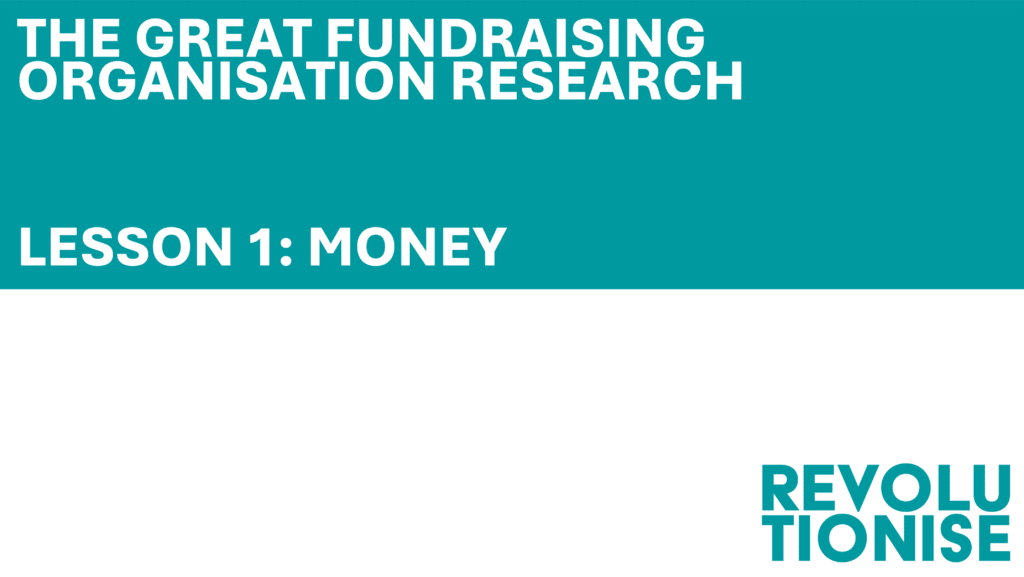By Maree Daniels, Revolutionise
So, you’ve got your benchmarking data. Maybe your charity is meeting the mark, maybe not. Maybe there’s an area of your program that’s consistently underperforming but you don’t know why. You’re doing everything you can push that extra bit out of your program, but things remain below par.
How do you address this underperformance and take the next step to establish (or revitalise) a growing program?
Alongside your benchmarking data and your program tactics, have you also looked at your organisational culture?
If you have areas of your programs that are lagging, ask yourself, ’could our organisational culture be the cause?’ Here’s some common issues we see when cultural problems are at play:
- Lagging retention.
- Difficulty getting great stories back from the programs team ready to thank and reward donors.
- Difficulty in bumping up acquisition results.
- Difficulty getting a ‘test and learn’ budget approved.
- Difficulty acquiring the volume you need in time to prove that a particular fundraising strategy works.
- Budgeting is stuck in a 12-month forecast cycle.
What we know from the ‘Great Fundraising Research’ is that there are consistent differences in the behaviours of organisations that are great at fundraising. Sustainable mission-driven growth doesn’t happen by accident. Organisations that achieve growth behave differently.
So, what needs to be in the mix for a healthy fundraising culture?
The research shows five key areas where the behaviour of ‘Great Fundraising’ organisations is different from the norm:
- Money
- Opportunities
- Culture
- Ambition
- Belief
Let’s focus on the first key area, and everyone’s favourite, the money!!
Getting the board and leadership on board with money – this is where benchmarking will help you!
The research shows that successful organisations have a long-term thinking investment mindset.
Remember, fundraising is an investment business and investment decisions should not be restricted by a 12-month budgeting cycle.
Boards and leadership of Great Fundraising organisations understand:
- The value of investment driven fundraising.
- Investments needs to be made and they invest for the long-term.
- Lifetime value is key (you don’t always make a profit off the first donation).
- Long-term financial targets should be based on lifetime value.
The benchmarking data is a great tool for educating leadership and securing their support in fundraising investment. Benchmarking data can be used to demonstrate the value of long-term metrics for achieving growth over the mid to long term. Benchmarking can also give a level of confidence in setting performance goals and targets for reporting back on the investment.
Great Fundraising organisations also teach us an important lesson about fundraising from a deficit.
I’m sure many of us are familiar with the approach where programs or a service strategy is written and costed up for the organisation. Expense budgets are set and income from other sources that might be generated from the services are applied. Inevitably, there’s a big gap that’s used to set the fundraising targets Here you go team – fundraise for the structural deficit we have!
This is something the Great Fundraising organisations do not do. Why?
Because this approach to money and growth simply doesn’t work.
No donor ever gave their hard-earned dollars to fund a deficit. No fundraiser ever leapt out of bed in the morning pumped about raising funds for a deficit either!
If this is the cycle your program is stuck in, it’s time to grab the benchmarking data and get talking. Start internal education about fundraising as a long-term investment driven business. Start the conversations that will shift the dial towards growth. (Make friends with your CFO too – a must-have ally!)
The Great Fundraising Research is available free of charge from our website – www.revolutionise.com.
If you want to dive deeper into what makes a Great Fundraising organisation with practical tools, tips and takeaways, please join Fi and me at the Great Fundraising Masterclass coming up in October.

